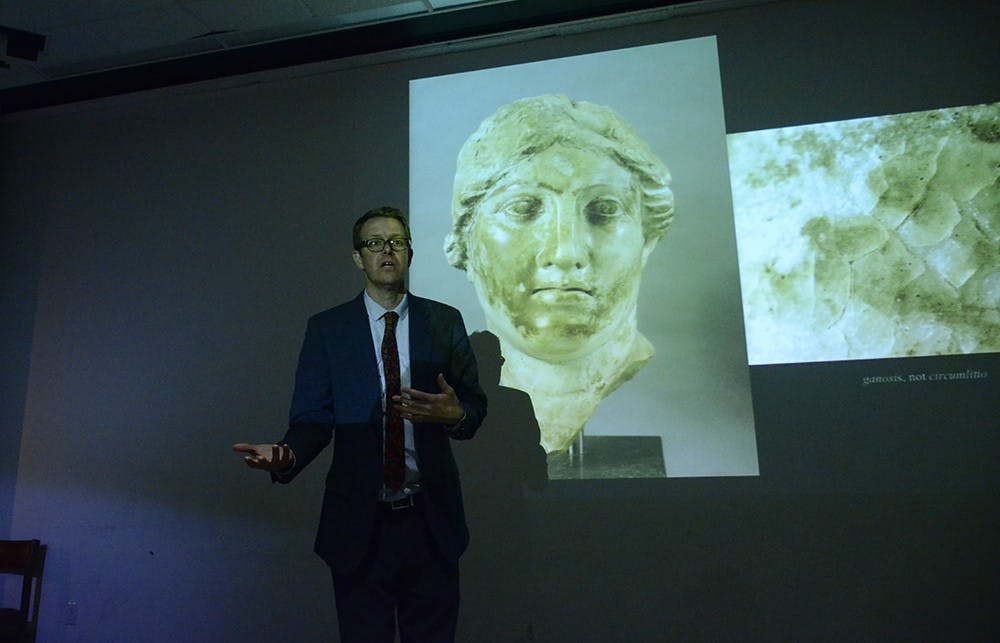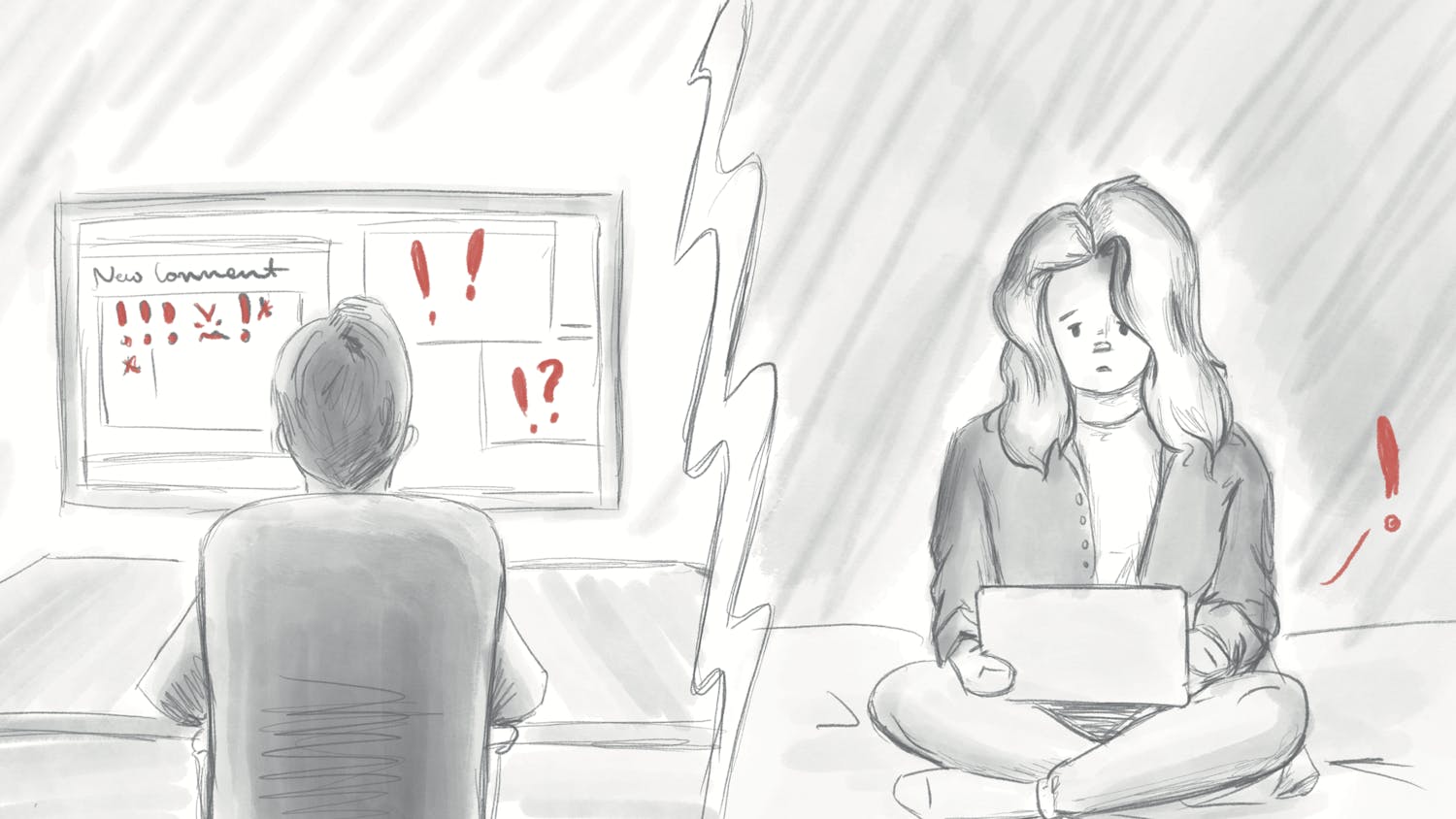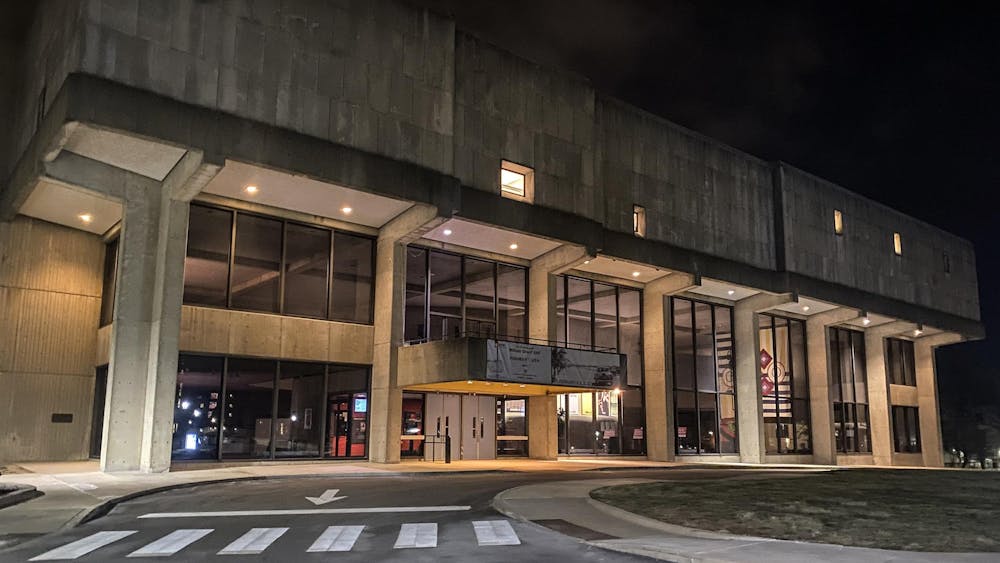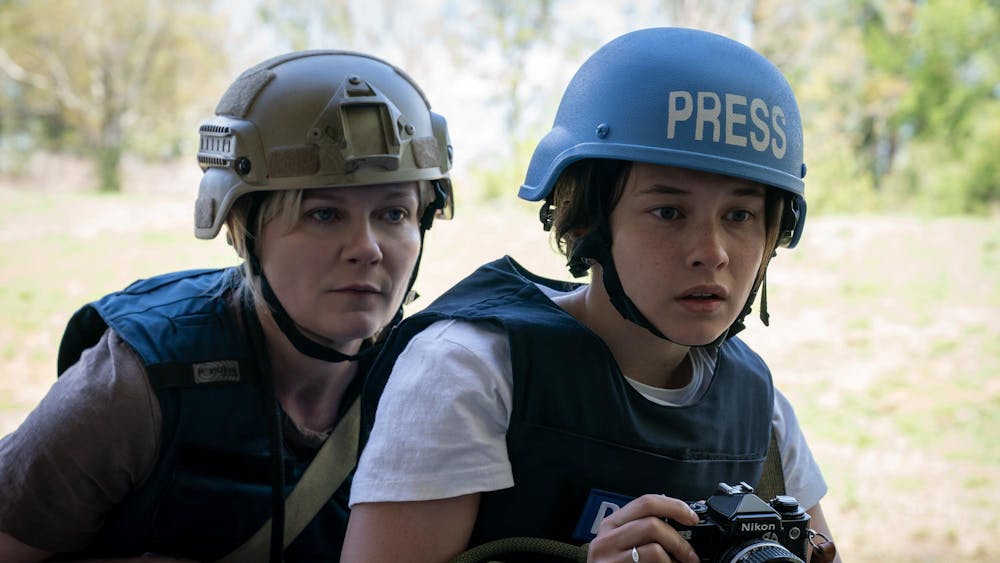Abbe began his lecture, “Color and Material Presence: Recovering Aesthetics of the Roman Marble Sculpture,” with a quote from Greek tragedy “Helen,” which dramatized the removal of a layer of color from a painting.
“These lines, of course, confirm paint and sculpture were common practice,” Abbe said. “Wiping out a coat of paint leaves behind an image neither in tact nor in its full form.”
The lecture occurred in conjunction with an IU Art Museum exhibition titled “Colors in Classical Art,” a display that Co-Curator Julie Van Voorhis said she hopes will change existing ideas about the nature of color in white marble sculpture.
“A lot of people think of this type of art as being inherently un-colorful, lacking in color,” Van Voorhis said. “As the lecture tonight showed, statues were richly painted and architecture was richly painted. Even the red and black vase tradition that we think of as being conventional often had a lot of added color on it.”
Throughout the lecture, Abbe walked attendees through the forms of analysis scholars use to determine which colors were prominent in each type of sculpture.
Abbe called upon the pieces displayed on the second floor of the museum as examples, though he also brought up images of Greek and Roman statues from around the world to show how vivid some of the lasting color on the pieces could be.
“We have red under paint in the hair and mouth and yellow in the flesh areas,” Abbe said as he showed an example on the projector. “When you look at the surface with a microscope you see this, a light polychromy.”
Polychromy refers to the use of many colors in decoration, especially in architecture and sculpture. Abbe used the term many times throughout the lecture. He brought up one example in which the color looked well maintained, though the piece itself was not.
“It might be an aesthetically ugly thing, but it is a superb example of marble polychromy,” Abbe said. “It doesn’t look that good because the final surface is not preserved.”
Abbe said he has not found many forums in the United States for discussion of color in Greek and Roman art and architecture.
Some of the previous discourse in the field, Abbe said, incorrectly asserted that Greek and Roman ?artisans intentionally relied on a monochromatic color palate to emphasize the form of the sculptural pieces.
“We in the West suffer from color angst, or chromophobia,” Abbe said. “Discussions of color like this remain the exception.”
Parts of the lecture also explored finds within the IU Art Museum, including a mysterious glass eye from an unidentified statue.
“The most interesting part was the discussion of the glass eye,” Van Voorhis said. “I never knew it was an animal eye before. This exploration in animal statuary, to me, was very interesting.”
Van Voorhis expressed gratitude to all who helped with the show, especially the students at IU who spent time organizing the exhibit around which the lecture ?revolved.
“I taught a graduate seminar that set the parameters for the exhibit, then there was an undergraduate class that selected objects and wrote the labels for the pieces that were on display,” Van Voorhis said. “That was very exciting, to have so much student ?involvement in the show.”






